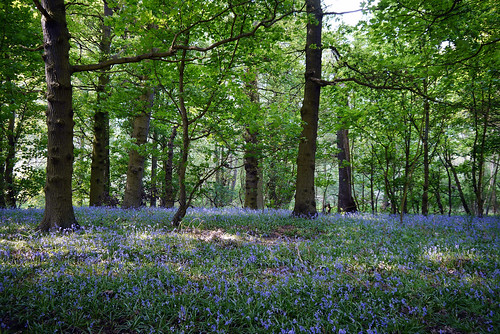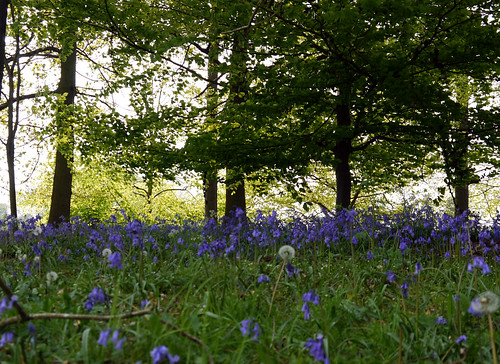On my recent visit to Attingham Park I enjoyed the walk along the Bluebell Trail. This took in both the native bluebell and the Spanish invader, a signboard along the trail explained in detail:
Our native bluebell is a typical ‘Atlantic’ species growing only in the moist conditions of Western Europe and reaching its peak of abundance in the British Isles. The British Isles is home to about 70% of all bluebells and the plant is justly the symbol of The Botanical Society of the British Isles.
Although thought of as a woodland plant, the bluebell responds well to less shady positions; thinning or coppicing woodland allows herbs such as bluebell, wood anemone and primrose to increase dramatically.
The leaves of bluebell contain toxic glycosides called ’scillarens’ that discourage herbivores, the toxins cause the heart rate to slow down, an effect similar to digitalis in foxgloves. In winter the bulbs of bluebells contain high levels of the storage sugars, fructan and fructose, Gerards Herbal, 1957, informs us that these sugars were extracted and used to stiffen Elizabethan ruffs.
What King Philip of Spain’s Armada failed to achieve in 1588 the Spanish bluebell has achieved by stealth and guile, the invasion of Britain. This foreign species is stouter and less nodding than our native bluebell, its flowers can be pink, purple, white or blue; you may notice some Spanish bluebells, there are some growing close to the Bee Lawn and on the riverbank by the cedars, this is unfortunate as the Spanish bluebell hybridises with our native species.










Cracking photo CherryPie:) My bluebells are just about finished now.
I am hoping there is a little life yet in the ones here
A restful place for eyes and mind.
It is a lovely relaxing place for a walk
You certainly get out and about. The bluebells remind me of the purple outbreak of heather up north.
A heather carpet is a lovely view too